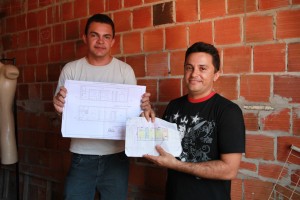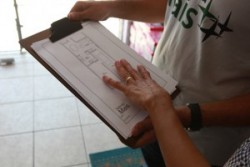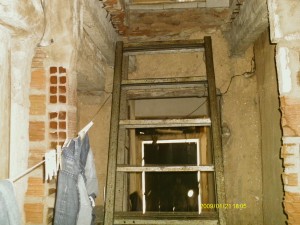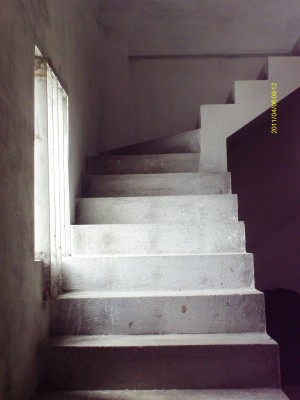Fishing for Technical Assistance: How TA Investments at the Client Level Impact BoP Markets
Can access to finance plus the expertise to guide the use of those funds create significant value for BoP clients and BoP markets at large? To update an age-old adage, the difference between giving a man a fish and teaching him how to fish, is technical assistance (TA) – and if it is valued and paid for in a business model, so much the better.
We largely accept that technical assistance investments at the BoP enterprise level can be a catalytic agent that allows fledgling initiatives to build sustainability despite scarce funds, tough environments and narrow margins. But can technical assistance at the client level be as catalytic? Despite adding cost to business models, can TA investment at the client level seed success and sustainability in those very businesses? Can extending TA to clients build capacity among BoP consumers, and unlock market potential in ways that reach beyond the initial transaction?
When it comes to the affordable housing sector, Ashoka’s Housing for All initiative, in partnership with the Hilti Foundation, are betting yes. Together, they are making concerted investments in the housing industry to test how TA can be combined with access to credit and materials – creating integrated solutions for home improvement. Through an initiative called Reforma Mais in Brazil, and a joint alliance of two citizen sector organizations in Colombia called Alianza por Vivienda Digna (AVD)- or Alliance for a Dignified Home- Ashoka and the Hilti Foundation are advancing business models that deliver TA with implications far beyond the client who receives it. The first condition for doing so is that finance for home improvements is available at scale. Both initiatives therefore partner with local finance providers with strong capacity to lend to low-income communities; Banco do Nordeste, in Brazil and Finamerica in Colombia, among other financing partners.
According to Egbert Appel, the managing director of the Hilti Foundation, which makes investments in social entrepreneurs in multiple sectors including housing, roughly 30 percent of a low-income client’s home improvement expenditure is effectively wasted between the purchase of inappropriate materials, wastage of materials, and faulty or unsafe construction and installation.

(Right: A Reforma Mais client in Brazil with a schematic for a home improvement project. Image courtesy of Ashoka).
For a client, technical assistance can often prove the difference between incremental attempts to improve living conditions in a home and, for instance, superior utilization of space and resources in ways that can impact health through better ventilation, sanitation and climate control. TA can impact the economics of a household by enabling the use of space in ways that enhance income, or upgrades that reduce utility costs. For some clients who would otherwise simply add on to unsound structures, appropriate structural reinforcements introduced through technical assistance can be the difference between life and death in earthquake or other natural disaster prone areas.
That technical assistance is valuable is clear, but is it valued? Low-income communities are not necessarily in short supply of advice on building. Advice from materials suppliers, contracted masons, retail outlets, and neighbors who have gone through similar home improvements are available and often free, if not optimal, choices. Therefore, ensuring that quality TA is accounted for in BoP business models requires clarity on who pays for it in the end, and a careful balance between what is offered versus costs.

(Image courtesy of Ashoka).
Who pays for client level TA? The answer has to do with aligning the long-term value of TA with who most benefit from it. In most cases the stakeholder that benefits most over the long-term is the client themselves. Therefore, striking the right balance between affordability and standardization on the one hand, and quality and custom advice on the other, is critical. In both Colombia and Brazil, key strategies to accomplish this balance include demand aggregation and tapping into local resources through partnerships with financing institutions and community organizations that bring their client flow and expertise to bear. This allows technical assistance offerings to leverage resources across clients, and better utilize high cost resources like architects and engineers.
Ashoka and Hilti Foundation’s initiative in Brazil, Reforma Mais, counsels home improvement clients on potential improvements and provides a list of materials and quantities, a schematic drawing of the improvement and ongoing site visits by a technician. These services are provided for a cost of roughly 7 percent of the home improvement.
During the first phase, TA was delivered to 500 clients living in Brazil’s urban favelas. The average family income of client families there was three minimum wages, or monthly household income of roughly USD $1,000 per month; although a significant percentage of households receiving TA earned considerably less. While the first phase delivered TA at no cost to the clients, the partners of Reforma Mais would like to see their offerings elected and paid for by clients and wrapped into the financing for home improvements in the second phase.
Another take on who should bear the costs of TA is that stakeholders other than the client, who benefit over the long term from the provision of TA, bear some of the costs. This can imply that government subsidies are channeled toward the provision of TA, or that material suppliers or finance providers are willing to co-invest in technical assistance, for the market catalyzing potential it represents. And how exactly does technical assistance catalyze market activity, you might ask?
In Colombia, Ashoka and the Hilti Foundation are supporting the creation of Allianza por Vivienda Digna, a business platform for community organizations like Aprodefa and Kayros which specialize in the sales of home improvement solutions and related TA. In Colombia, client families receiving TA are typically earning up to three minimum wages, roughly USD 825 per month. Through AVD, clients have the ability to purchase integrated home improvement solutions, that is, integrated with finance, multiple product offerings and the technical assistance with which to efficiently install and construct. AVD mobilizes a network of community based sales women, who sell home improvement solutions and simultaneously offer a first line of TA to be followed up by an architect or technician. This joint initiative, still in the pilot stage will have far reaching implications if successful. AVD will serve as an alternative distribution channel for suppliers of home improvement materials as well as a new avenue for originating home improvement loans. In practice, this could be a replicable framework to invite diverse players willing to invest in new market share, to effectively share the cost of TA. Future plans include training and certifying masons willing to build in accordance with TA specifications (in partnership with SENA, Colombia’s national vocational training institution and SwissContact an international organization providing training and continuing education).

(A staircase addition in a Brazilian home, before and after. Images courtesy of Ashoka).

This type of initiative, scaled up would catalyze market activity, create jobs for community sales forces, increase incomes for construction workers, build capacities of local communities and serve as a new channel for access to finance for low-income home improvements. Far from giving a man a fish, or even teaching a man to fish- approaches like these would be tantamount to revolutionizing the fishing, or in this case, the affordable housing industry.
Please like NextBillion on Facebook and follow us on Twitter.
- Categories
- Uncategorized
